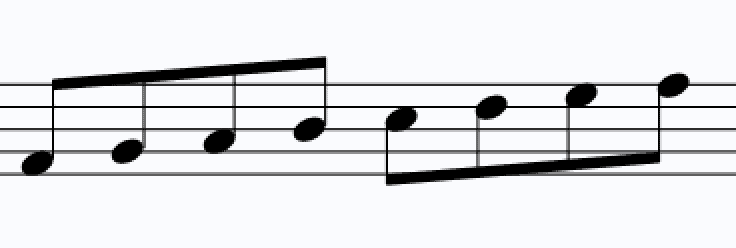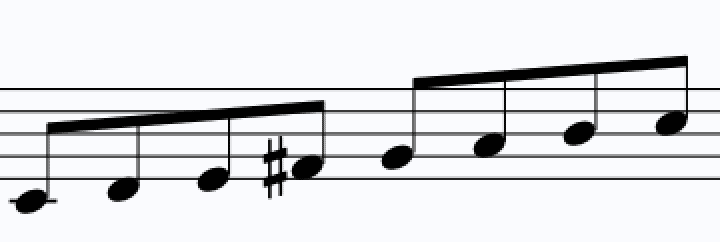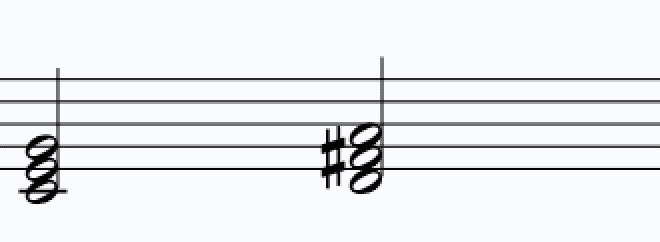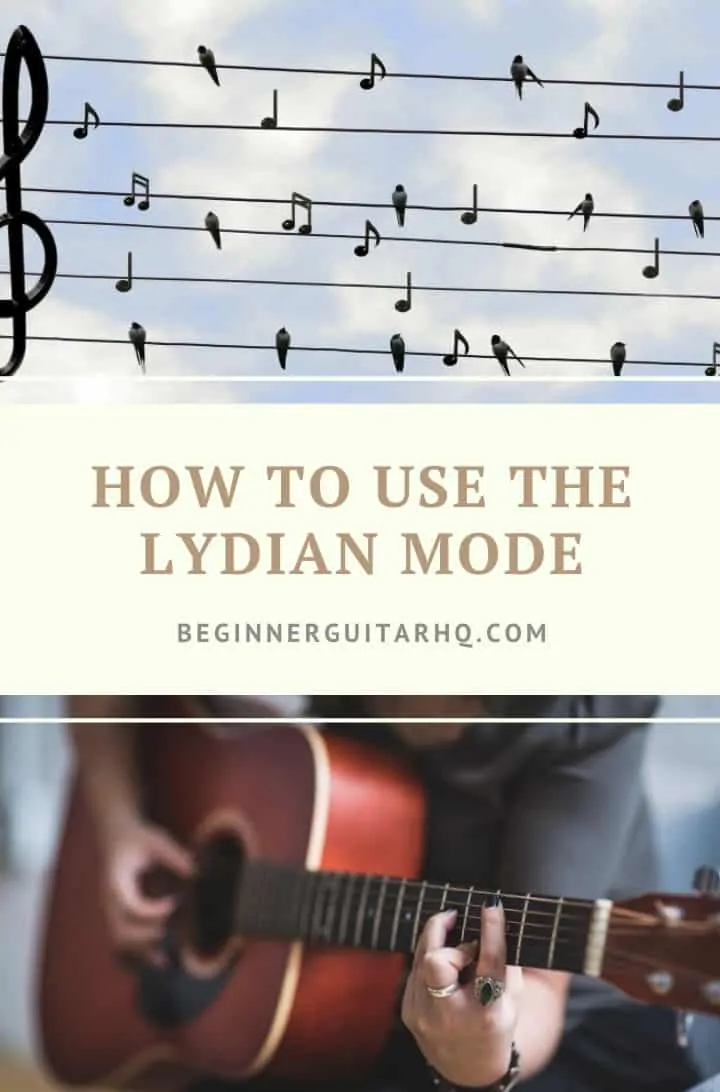At BeginnerGuitarHQ, it’s our mission to teach you how to play the guitar as well as possible. One of the most important parts of a guitarists toolbox is the humble scale. You’ve probably become rather used to standard major and minor scales, but were you aware of the basically endless possibilities modes afford you? They can change the tone, style and feel of your playing with just one unexpected note.
In this important guide, I’ll be explaining how you can use the Lydian mode within your guitar playing.
If you’re on the lookout for a way to spice up your melodies, chords and improvisation look no further than this useful guide.
Contents
First Things First
What Is A Mode?
The most important first thing to be aware of when approaching the Lydian mode, is what a mode actually is. Technically, the term ‘key’ only applies to diatonic music. As such, you can have your major and minor keys and be diatonic to them (that is, stay within them when playing), but you can’t really use the term diatonic to refer to a mode. A mode is, to all intents and purposes, however, basically the same as a key. You’d very rarely see the notes of the mode written out in a key signature, but they’re basically the same thing, just with more possibilities.
There Are A Lot Of Modes
Today, we’re looking at the Lydian mode (which we’ll get to in a moment) but there are hundreds more modes in existence. One way to look at modes is to imagine a piano. The white notes from C-C make a simple C major scale. Move up to D, and if you simply go from D-D without hitting a black note, you’ll be playing the Dorian mode. The same with E, F, G, A and B. Now remember that there is a minor scale equivalent (so the equivalent of having the same approach, but with the C minor scale as your basis), and a harmonic minor scale equivalent, and melodic minor, and all of the modes, and all of their variants. It basically goes on forever, but you don’t need to worry about that. For now, you just need to worry about the Lydian mode.
And What Is The Lydian Mode?
The Lydian mode is, in its purest form, the white notes from F-F. This means that an F Lydian scale is F, G, A, B, C, D, E. Obviously, this is the enharmonic equivalent of C major, so the notes are exactly the same; it’s the way you use the scale that changes things.
The most important notes in the F Lydian scale are:
- F. The tonic/root note. You’ll know if you’re in F Lydian if you only play white notes but the music sounds ‘final’ when you land on an F.
- A. This gives the scale a major implication. If you play a tonic chord, it’ll be major, not minor. Minor would need an Ab.
- B. This is the note most distinctive of the Lydian mode. The tritone above the root is included, which is very rare for any scale, as that is one of the most dissonant intervals in music.
- E. This is the leading tone. It would typically be present in the major or harmonic minor scales, and as it is just one semitone from the root, resolves upwards very easily.
So remember: F, G, A, B, C, D, E.
The Lydian Scale On F
Transposing The Lydian Mode
Moving The Lydian Mode To C
While looking at the Lydian mode in its most simple formulation gives us the simplicity of the F, G, A, B, C, D, E scale mentioned above, it isn’t as though the Lydian mode can’t be moved to every single other note.
We can start with the C Lydian mode, which brings the F Lydian down by a fourth. This means the C Lydian is made up of the notes C, D, E, F#, G, A, B. Most of these are the same as the F Lydian, but with the tonic now C, and that all important tritone being found on the F#. We’ll now focus the rest of this guide around the C Lydian mode for simplicity, but remember that it can be moved to any note you need via transposition.
The Lydian Mode On C
Moving The Lydian Mode To Every Other Note
The easiest (but longest) way to do this is to simply look at the notes, and move every single one of them up by the amount necessary to reach the new tonic. For example, if you’re starting on C and want to play the Eb Lydian, then you need to move every note up by a minor 3rd. Take the D and move to an F, the E to a G, the F# to an A. Keep going until you’re in the new correct place.
The second way, which is quicker but a little more complex, is the preferred method which will benefit your theoretical understanding of the mode as well as your use of it. You’ll need to remember the interval pattern of the Lydian mode:
Tone, Tone, Tone, Tone, Semitone, Tone, Tone, Semitone
Now you can use this anywhere you want. To create the A Lydian scale, for example, start with that movement of four tones: A, B, C#, D#. Then add the semitone movement to reach an E. Then two more tones: F#, G#. One more semitone and you’re back home on the A tonic. Easy.
Apply this same logic to any note you may need to use, and you have a basic understanding of how to form the Lydian mode anywhere you want, and can start to use it in melodies.
Using The Lydian Mode In Melody
There are quite a few things you can do with the Lydian mode in your music, and a few things you should avoid that could either sound strange, or simply take you out of the Lydian mode. Many Lydian melodies use the mode consistently, but there are times when the occasionally raised fourth simply appears for effect. We’ve listed a few things you should do and a few that you should avoid below.
Avoid: Accidentally Turning The #4 Into A Leading Tone
The first thing to really try to avoid when composing or playing the Lydian mode is to make sure you don’t accidentally wander away from the Lydian mode. As the scale is just one semitone different from a major scale, you can get caught up by mistake in certain places. Obviously, the Lydian mode still has a leading tone (in C, this is the B-C movement) which helps to confirm your key. This semitone jump to the tonic often makes a phrase of section sound ‘final’.
However, be aware of the fact that the movement from F#-G can also have the same leading tone feel. If you’re moving from a semitone from F# to G and the harmony has gone from a D major chord to a G major chord, you’re in serious risk of this sounding like a perfect cadence in G major, rather than simply chordal movement in C Lydian.
Of course, I’m not suggesting that you make you piece sound wrong or worse. If this modulation to G is what sounds right, then absolutely go for it. However, if you need to remain in the Lydian mode (for improvisation or some other specific reason) then be aware of the fact that your melodies can accidentally lead you towards an unwanted tonal centre.
Accidentally Using A Leading Tone
Do: Emphasise The Sharpened Fourth (If It Sounds Right)
The whole point of the Lydian mode is that characteristic #4th. If you aren’t taking harmony into consideration, the without playing the #4th, no listener is ever going to know you’re using the Lydian mode anyway, so you may as well make the most of it.
Much like the above, don’t start forcing it in for the sake of it, but if there is a place in which you could confirm your tonality, then go for it. Maybe move from a G down to an F# to remind the listener of that unexpected semitone, or if you’re feeling very brave, maybe make the leap from the tonic up to the tritone above it.
Do: Play With The Brightness Of The Mode
The tritone interval has long since been considered a negative, dissonant interval. This probably comes from the fact that using this interval in music was literally illegal a long time ago, due to a belief that it was the ‘devil’s interval’. However, this time is long since passed and the note is used in whatever context it is needed these days.
As such, use the tritone to suggest brightness. The Lydian mode is the brightest and happiest mode available in the major scale, as it takes the already very uplifting major scale, and simply adds yet another sharpened note to it. If you aren’t taking advantage of how floaty and positive this mode can be when used melodically, then you’re missing the point. Move towards a more dissonant mode built on flattened notes if that’s the vibe you’re looking for.
Do: Make The Most Of That Whole Tone Run
Aside from that distinctive tritone interval between the tonic and sharpened fourth, the second most important sound created by the Lydian mode is the whole tone run that goes from C up to F#. It’s an often rather jarring and unexpected sound, but when used for its unique effect, it has a lot of power.
For example, think back to any time you’ve seen a dream sequence on TV. The dreamy harp sound you always hear is the whole tone scale (a scale that doesn’t use any semitone movement: C, D, E, F#, G#, A#, C). Notice that those first four notes are the same as the first four notes in the Lydian mode. You can use these to add a subtle dreamy quality to any melody you’re playing. Making that jump from E to F# instead of the expected E to F is noticeable, bright and creates that dreamy, ethereal sound that the mode lends itself to so well.
The Whole Tone Run
Do: Test It Out During Improvisation
You might be used to improvising in a specific way (using a pentatonic scale and chucking in a few blues notes every now and again- sound familiar?), but the Lydian scale unlocks a lot of new options for creating a unique sound.
Moving from C straight to F# is going to give you a dissonant sound straight away, but used in the correct context and it might just be the unexpected perfect note. Similarly, using that G-F# semitone could add a cool, trippy effect to your playing. There isn’t any definitive answer to give on how to use the Lydian while improvising, the only way to find out is through trial and error.
Also, don’t forget that you don’t have to decide on a mode and stick to it forever. You can just as easily stay in a major key and just throw in a note or two borrowed from the Lydian mode wherever you feel it works. This could be especially powerful if you’re playing over a chord sequence that has borrowed modal chords in it.
Avoid: Remaining Lydian Just For The Sake Of It
Despite all of these tips and pointers on how to use the Lydian mode well in your melodies, there is one thing you should always keep in mind: there is no reason you should have to stick to the Lydian mode.
You might be playing in a piece set in the Lydian mode full of Lydian melodies and Lydian chords, but if an F natural sounds better than an F#, then just use the F natural. No one is forcing you to stick to a set of rigid rules (unless they actually are, in which case, ignore me).
Using The Lydian Mode In Harmony
There are many ways the Lydian mode can be used to create harmonic interest in your piece. In general, you’d use Lydian harmony to support a Lydian melody, but this certainly doesn’t always have to be the case. Here are just a few things you can do, and a few things you should avoid.
Avoid: Accidental Modulation
Much like my advice above (don’t turn the fourth into a leading note); don’t accidentally modulate away from the Lydian mode. The word accidentally is quite important there, because if you want to modulate, then by all means go for it.
If you’re using the major version of chord II (in C major that would be a D major chord) then your composition runs the risk of accidentally sounding finished when it lands on G, rather than C. This is because D major to G major is a very standard perfect cadence, which is the strongest cadence in music. Depending on context, it won’t always sound like this (you could be using the D major as a secondary dominant, for example), but if you’re improvising chords and end up playing that sequence, you could really confuse your band by accidentally taking them into an unexpected new key.
Do: Add Interesting New Dissonances
One of the best implications of that unexpected F# within your C Lydian scale is the amount of dissonance it can allow you to access. For example, if you’re suspending a fourth in a C major chord, it isn’t typically going to be an overwhelmingly strong dissonance. If you’ve got an F# instead, you’ve got the combined aggression of a semitone and a tritone dissonance just from that small change.
It also unlocks the possibility of your chord four (typically a very smooth, consonant chord in most modes) becoming a crunchy diminished chord. This has a lot of implications, not to mention all of the other ways you can add an F# to a chord that wouldn’t normally have one: chord V naturally becomes a major 7th instead of a dominant, for example.
Do: Use The Major Version Of Chord II
Remember back to what I said above about using chord II, as it could accidentally become a dominant chord and cause you to modulate. If you’re being careful with it, however, the major version of chord II can actually end up giving you some really unique sounds. You can move from chord I to chord II, for example, without losing the major sound. You’ll find that there are quite a lot of songs you’ll be familiar with that include that subtle nod towards the Lydian mode, as the minor version of chord II often sounds rather weak without its major 3rd.
One of the most prominent ways the major chord II is used when in a Lydian tonal centre is in flamenco music. While a specific version of the Lydian scale is often used in the genre, the opening move from major chord I to major chord II is probably the most distinctive sound in the entire genre.
The Major Version Of Chord II
Do: Use Chord VII Without Diminishing It
Most popular music avoids using chord VII simply because a major key forces it to be diminished if remaining diatonic. This creates a dissonance that popular composers just don’t want. If you’re using the Lydian mode, however, you’re free to turn what would be a B diminished chord into a standard B minor.
This means you can freely move from chord VII to chord I without any fear of the first chord sounding like a strange dissonant mess that doesn’t flow with everything else you’d been playing. One of its best implications comes when you’re playing an arpeggio on chord I and can move every single note down by a semitone.
Do: Borrow Lydian Chords For Effect
As with notes in a Lydian melody, you don’t need to feel restricted to compose rigidly in just that one mode forever. You can mix and match as much as you like; simply end up on whatever sequence you thinks sounds the best.
In doing so, you can play around with a technique called modal borrowing. This does exactly what it says on the tin: you can borrow a chord from a mode you aren’t currently in. For example, you could be playing in a very clear C major with your Fs remaining natural pretty much consistently. However, if you think the D minor chord is sounding a little weak, there is absolutely no harm in very temporarily moving towards the Lydian mode, stealing a D major, and returning straight back to your C major tonal centre.
Avoid: Accidental Tritone Clashes
The final thing to be aware of when using the Lydian mode in harmony is that, while it can give some great new chordal options and provide some brilliant intentional dissonance, the mode is still centred on the most dissonance interval in music.
Remember that in a lot of situations, the tritone is likely to remain dissonance. If you’re improvising chords and chuck on that has a tritone interval in it, you need to be sure it’s going to work, because there is nothing worse than a note so dissonant that it just sounds like you’ve played the wrong thing!
A Tritone Clash.
Examples Of The Lydian Mode In Use
- The Simpsons Theme – Danny Elfman. This is one of the most famous examples of the Lydian mode in use across all music. This immensely catchy theme tune is centred on the nuances of the mode, placing particular emphasis on the tritone interval. The opening vocal chant of “The Simpsons” opens with a leap of a tritone (which is very unusual, but somehow Danny Elfman made it work), while the very first notes of main melody move from tonic, to major third, to augmented fourth. This shows just how easily the mode can be used to give a bright sound that doesn’t come across as dissonant at all.
- Flying In A Blue Dream – Joe Satriani. Satriani is known for his complex guitar-led compositions, and his persistent use of the Lydian mode here remains well in-line with his typical compositional approach. Notice how that opening chord sequence sounds just a little strange, while avoiding actually sounding dissonant or ‘wrong’. This track has the added benefit of showing off how the Lydian can be used really smoothly in improvised passages.
- Waltz #1 – Elliot Smith. Interestingly, the harmony sound in this Elliot Smith track sounds weirdly similar to that of the above Joe Satriani track. This is, obviously, thanks to that distinctive interval from within the Lydian mode. Listen out for the vocals as well, the very first note we hear of each phrase has a distinct level of dissonance, as it sings out a note that clashes against the chord beneath it, and resolves up through that semitone. Listen out for the line “what was I supposed to say”, as that really shows off the unique qualities of the scale.
Different Types Of The Lydian Mode
- Lydian Minor. The Lydian minor (which is, strangely, a rather controversial figure amongst music theory) is a deceptive name for this mode. The ‘minor’ element suggests a minor 3rd, but the minor 3rd is nowhere to be seen. In fact, the tonic chord for this mode is a very simply major triad. The augmented 4th is still present, making sure the definitive Lydian sound is still strong and clear, meaning it is left to the final notes of the scale to convince us of its minor quality. Both the sixth and seventh in the mode are flattened, which does a convincing job of darkening the mode. What this does inadvertently, as well, is create a chromatic run in the middle, something very rarely found in any mode. The augmented 4th, to 5th, to minor 6th run is a short chromatic moment that gives this mode a very unique flavour.
- Lydian Augmented. Also known as the very on-the-nose and self-explanatory Lydian #5 mode, the Lydian Augmented is simply the Lydian mode with an extra augmented moment. The #5 has some very interesting implications on the mode’s character. Firstly, it means the tonic chord itself is an augmented chord, making this mode very hard to conclude fully, as there is always that layer of dissonance present. It also comes very close to creating a full run of the whole-tone scale, as the movement from C, D, E, F#, G# (or any transposed equivalent) avoids all semitone movement. It doesn’t quite finish its whole-tone run though, as the semitone in the middle is moved to the sixth instead. This is an interesting scale, as it only changes one note from the standard Lydian, but its entire existence is dramatically changed.
- Lydian #2. The Lydian #2 is a relatively rare mode, and its simple name sums up what it exists to achieve quite nicely. Interestingly, thanks to the #2, the very first interval we hear is an augmented 2nd, something typically associated to the harmonic minor scale. In a way, this gives this mode more of a minor feel than the actual Lydian minor, even though the major third is still present. Otherwise, this mode is exactly the same as the regular Lydian, with the standard #4 still present to define the sound.
Conclusion
On the whole, the Lydian mode is a real treat for composers. It has so many options for use- it’s impressive that just one note different from a simple major scale can have so much impact. The most important things you can take home from this article are:
- You can transpose this mode to any tonal centre you want. Don’t stick to C just because that was our focal point.
- Make the most of its characteristic sounds, such as the whole tone run and the tritone interval.
- But don’t feel like you have to remain in the Lydian mode. Modulate if you want, borrow chords, throw a Lydian flair into your improvisation every now and again.







